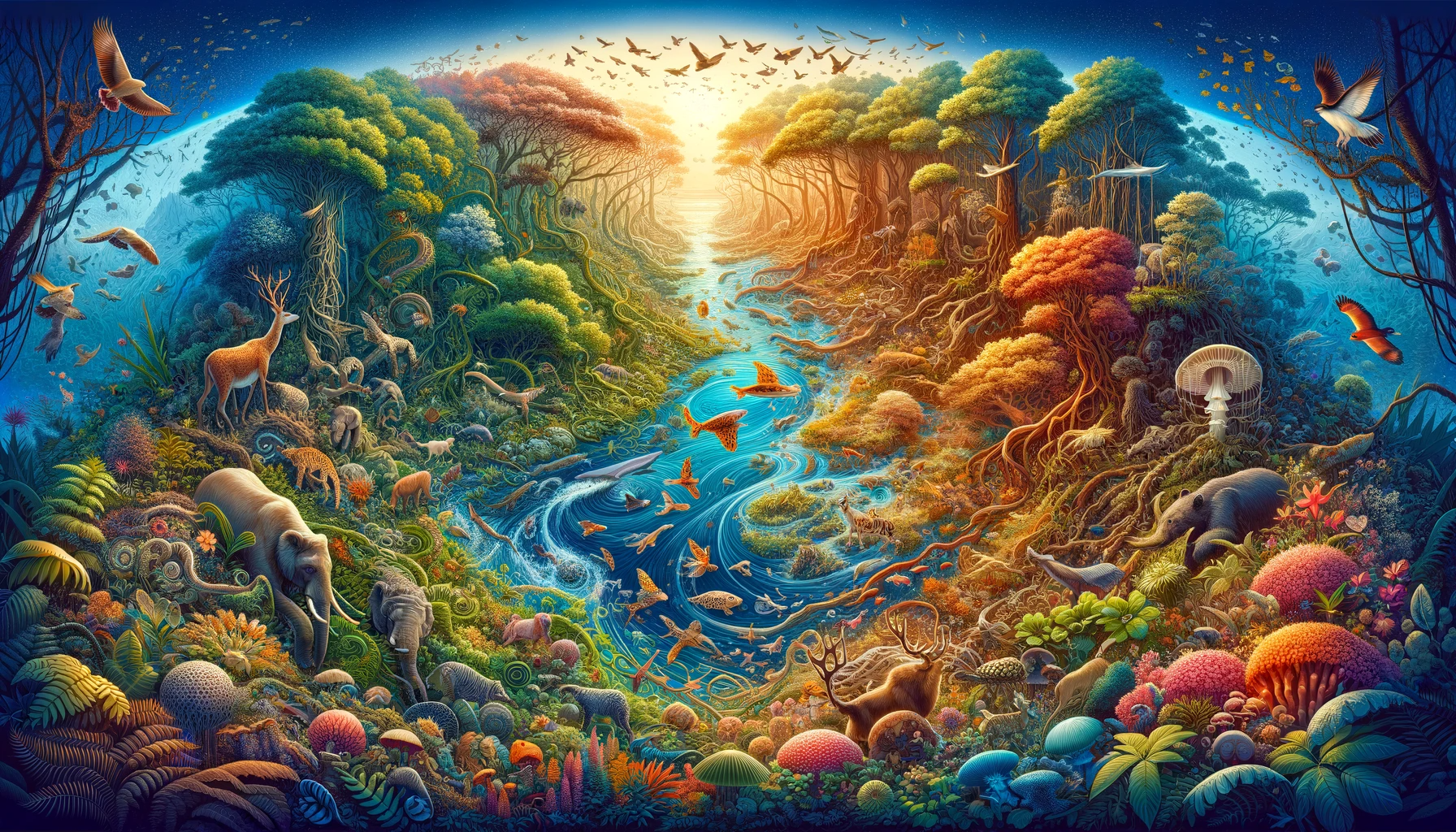Biodiversity, or the variety of life found in a particular region, plays an essential role in maintaining the balance and health of ecosystems. Its significance stretches from ecological reasons to economic, medicinal, cultural, and aesthetic values. This article delves into the multi-faceted importance of biodiversity in creating and sustaining resilient ecosystems.
1. Ecological Significance
- Resilience to Disturbances: Greater species diversity ensures ecosystem resilience to various stressors like drought, disease, and human disruptions1.
- Ecosystem Productivity: Multiple species can exploit a broader range of resources, leading to higher overall productivity2.
- Soil and Water Conservation: Biodiverse systems help in soil formation and protection, filtering pollutants, and moderating streamflows.
2. Economic Importance
- Agriculture: Biodiversity is vital for food security, nutrition, and livelihood. Different crops and livestock respond differently to conditions, thus ensuring food supplies during unforeseen events3.
- Medicine: Over 70% of the world’s most beneficial drugs are inspired by nature4.
3. Sociocultural Value
- Cultural Identity: Many societies draw upon local biodiversity for cultural, spiritual, and religious activities5.
- Recreation and Tourism: Natural landscapes, rich in biodiversity, attract tourists, which is a significant source of income for many countries.
4. Maintaining Ecological Processes
- Carbon Sequestration: Biodiverse ecosystems like forests and wetlands capture and store vast amounts of carbon dioxide, mitigating climate change6.
- Water Purification: Wetlands, with their rich biodiversity, act as filters, removing pollutants from the water7.
5. Ensuring Survival of Species Species interdependence ensures the survival of many species. For instance, the extinction of one might endanger another, especially in pollinator-plant relationships.
Conclusion
Preserving biodiversity is not just a moral or aesthetic choice; it’s a practical one. It strengthens ecosystems against disturbances, sustains economic structures, and reinforces cultural values. As humans continue to exert pressure on the environment, prioritizing biodiversity conservation becomes an indispensable step towards a sustainable future.
References:
- Elmqvist, T., Folke, C., Nyström, M., Peterson, G., Bengtsson, J., Walker, B., & Norberg, J. (2003). Response diversity, ecosystem change, and resilience. Frontiers in Ecology and the Environment, 1(9), 488-494.
- Hooper, D. U., Chapin, F. S., Ewel, J. J., Hector, A., Inchausti, P., Lavorel, S., … & Lawton, J. H. (2005). Effects of biodiversity on ecosystem functioning: A consensus of current knowledge. Ecological Monographs, 75(1), 3-35.
- Thrupp, L. A. (2000). Linking agricultural biodiversity and food security: The valuable role of agrobiodiversity for sustainable agriculture. International Affairs, 76(2), 265-281.
- Newman, D. J., & Cragg, G. M. (2016). Natural products as sources of new drugs from 1981 to 2014. Journal of Natural Products, 79(3), 629-661.
- Maffi, L., & Woodley, E. (2010). Biocultural diversity conservation: A global sourcebook. Earthscan.
- Pan, Y., Birdsey, R. A., Fang, J., Houghton, R., Kauppi, P. E., Kurz, W. A., … & Hayes, D. (2011). A large and persistent carbon sink in the world’s forests. Science, 333(6045), 988-993.
- Zedler, J. B., & Kercher, S. (2005). Wetland resources: Status, trends, ecosystem services, and restorability. Annual Review of Environment and Resources, 30, 39-74.


